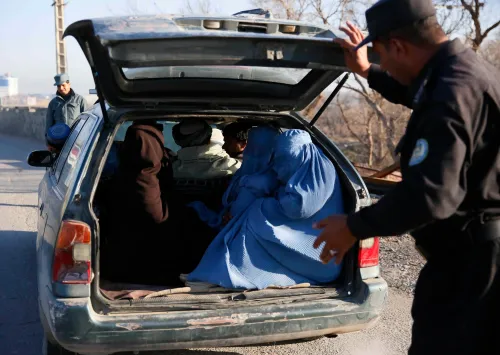How Are Nepal's Protests Impacting Border Trade?

Synopsis
Key Takeaways
- Protests in Nepal are impacting cross-border trade with India.
- India has strengthened border security measures in response.
- Bilateral trade exceeded NPR 1 trillion in the last fiscal year.
- Key commodities include petroleum products and electronics.
- Ongoing dialogues are crucial for resolving trade disruptions.
New Delhi, Sep 11 (NationPress) The recent Gen Z demonstrations in Nepal have severely disrupted the movement of people and goods across its border with India, creating a significant bottleneck that has hindered trade and commerce.
In response, India has enhanced security measures at the borders, with reports of fires occurring in several villages near Panitanki in the Darjeeling district of West Bengal. Similar incidents have been reported from Bihar, where violence and jailbreaks have taken place in Saptari and Birgunj of Nepal. The situation across entry points in Uttar Pradesh is also critical.
Traffic remains either stagnant or very limited for those urgently needing to cross, adversely impacting the Himalayan nation’s trade relationships.
India is Nepal’s largest trading partner, with bilateral trade exceeding NPR 1,134.53 billion (over USD 8 billion at the current exchange rate) during the fiscal year 2022-23, according to a report from Nepal’s embassy in New Delhi on May 8.
The report indicated that imports for the 2022-23 fiscal year reached NPR 1,027.84 billion (over USD 7 billion) while exports to India were valued at more than NPR 106.69 billion (about USD 755 million).
Typically, bilateral trade is conducted in Indian rupees, which are convertible at all banks and financial institutions in Nepal.
The two nations regularly hold meetings of the Inter-Governmental Committee on Trade, Transit, and Cooperation to facilitate market access, harmonize tariffs, and streamline customs documentation, including online certificates of origin and joint infrastructure projects.
Such frameworks promote the swift transport of essential commodities like wheat, sugar, and petroleum products, while also ensuring Nepal can access global markets beyond India.
Under the 1996 India-Nepal Trade Treaty and the 2009 Transit Treaty, goods in transit (such as Nepali exports destined for Bangladesh) utilize several Indian land ports.
Kathmandu has indicated that imports from India have risen sharply, including items like petroleum products, transport equipment, electronics, machinery, rice, crude soybean oil, and more.
Key agreements such as the Trade Treaty, the Agreement of Cooperation to Control Unauthorised Trade (2009), Treaty of Transit (1999), and Rail Services Agreement (2004) govern the framework for bilateral trade and transit.
Nepal enjoys duty-free entry into the Indian market for manufactured goods (with existing domestic tax) on a non-reciprocal basis, apart from a limited negative list.
The Agreement for Cooperation to Control Unauthorised Trade, signed on October 27, 2009, provides a legal structure to combat illegal trade.
Earlier this year, Kathmandu hosted a significant joint meeting of the India-Nepal Inter-Governmental Committee on Trade, Transit, and Cooperation, focusing on enhancing investment strategies and commercial infrastructure development.
The Nepal-India Treaty of Transit (1992), which is renewed every seven years, grants Nepal port facilities at Kolkata, Haldia (West Bengal), and Visakhapatnam (Andhra Pradesh).
For bilateral trade, 27 designated entry-exit points exist along the Indo-Nepal border.
The Rail Services Agreement of 2004 details the operation and management of rail services between the two countries. According to a Letter of Exchange (LoE) from the Rail Service Agreement signed on July 9, 2021, all cargo train operators can utilize the Indian Railway network.
Citizens of both nations typically enjoy easy access across the border with minimal interference; however, occasional tensions may lead to border closures or stricter regulations.
As with previous instances, traders and business entities remain hopeful that the current unrest will soon subside, allowing the free flow of goods to resume.










